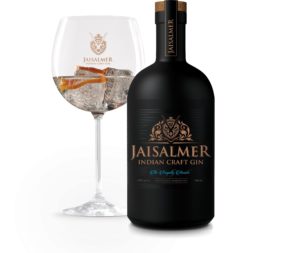
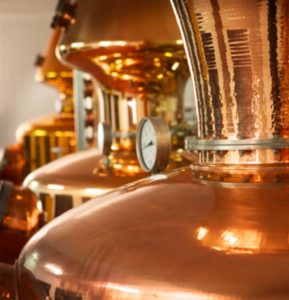
Drumshanbo Gunpowder Irish Gin – Gunpowder Tea
After attending a traditional tea ceremony in Zhejiang, China, Drumshanbo founder P J. Rigney pondered how the gunpowder tea he had enjoyed would work in a gin. Rigney said, “The long, mysterious finish of this truly remarkable tea sparked the curiosity in my mind for the exotic recipes I could create back home at The Shed Distillery in Drumshanbo.” While this style of tea resembles the compact pellet shape of old-school gunpowder, it is not made from the chemical explosive from which its name is taken. However, the style is unmistakably smoky, differentiating Drumshanbo from other tea-influenced gins.
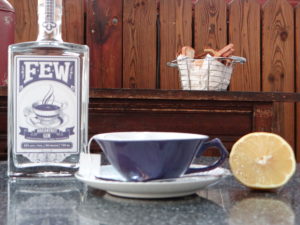
FEW Breakfast Gin – Earl Grey
FEW Breakfast Gin started as “a bit of a joke,” according to Founder/Distiller Paul Hletko. The team asked, “What would make a gin a ‘Breakfast Gin’?” The answer was unequivocal – “tea.” Pointing out that citrus and gin have “a long and storied history together,” he found that the bergamot in Earl Grey offered a natural and complementary citrus note with “a hint of tannin and astringency [that] creates balance.”
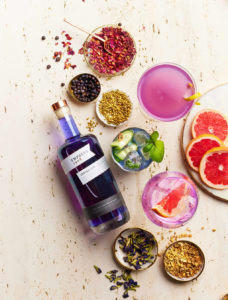
Empress 1908 Indigo Gin – black tea/butterfly pea flower
When setting out to create a unique gin, Master Distiller Phil Lecours looked to the Fairmont Empress Hotel’s famous tea program. After sampling multiple teas from the Empress, Lecours chose the Blue Suede Shoes blend, a combination of the Empress’s signature black tea and the blue-hued butterfly pea blossom. Like the bergamot does for FEW Breakfast gin, the butterfly pea blossom in Empress “balances the traditional citrus notes … with a warm herbal earthiness” and lends its striking violet-blue color to the spirit. Along with the butterfly pea, the Metropolitan Tea Company’s black tea (sourced from Assam, Kenya, South India, Ceylon, and China) possesses “floral, fruity and oaky notes that create balance.”
Jaisalmer with cocktail
Jaisalmer Indian Craft Gin – Darjeeling Green Tea
Much like the English cherish their tea, the people of India consider it an essential morning sip and appreciate its therapeutic qualities. Highly sought after and often counterfeited, India’s Darjeeling was granted a protected Geographic Indication (GI) in 2004. Thus, only teas certified by the Tea Board of India can use the name, which helps ensure continued authenticity. Using India’s prestigious tea in an Indian gin makes for a distinctly local and culturally relevant product, whose muscatel aroma adds a floral and spicy quality to Jaisalmer.
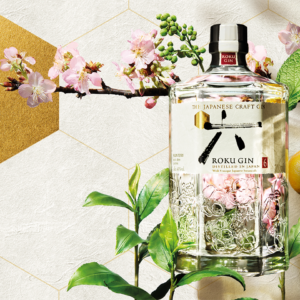
Roku Gin – Sencha and Gyokuro teas
Japan’s affinity for tea is tied to its history and culture. Coincidentally, the Japanese tea ceremony, which dates back to the sixteenth century, was founded in O-Yamazaki, which is located quite close to Roku’s first distillery. According to House of Suntory Brand Ambassadors Jonathan Armstrong and Davey Jones, the Sencha and Gyokuro teas are secondary in the gin’s flavor profile. However, they offer an essential “subtleness, refinement and complexity” that, in concert with the gin’s key botanicals (Sakura petals/leaves, yuzu, sangho pepper), produce the specific profile for which Roku is known.
